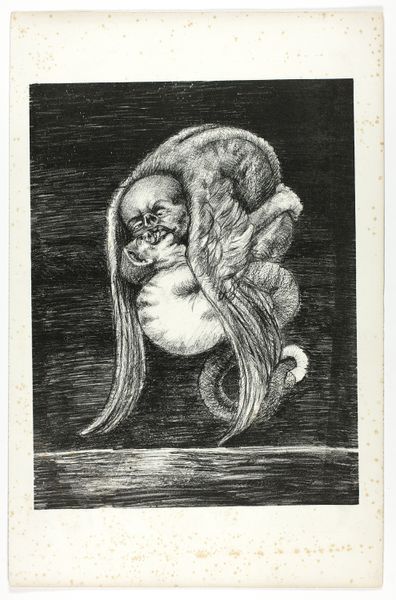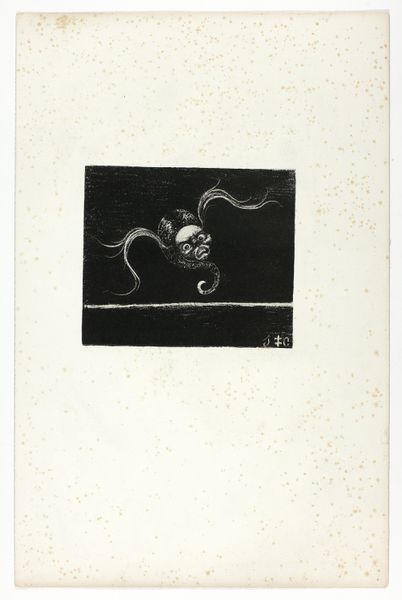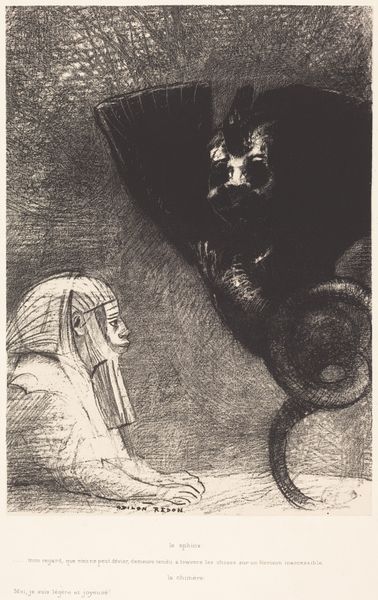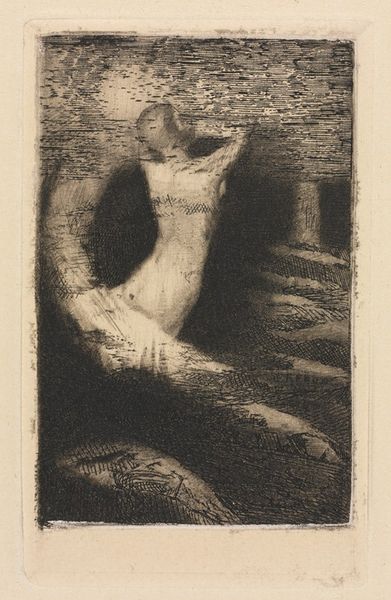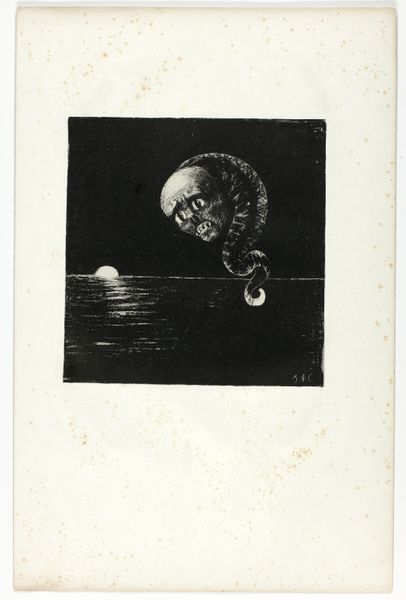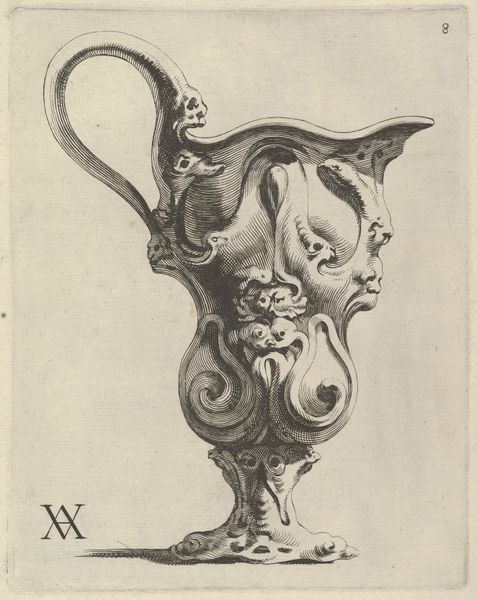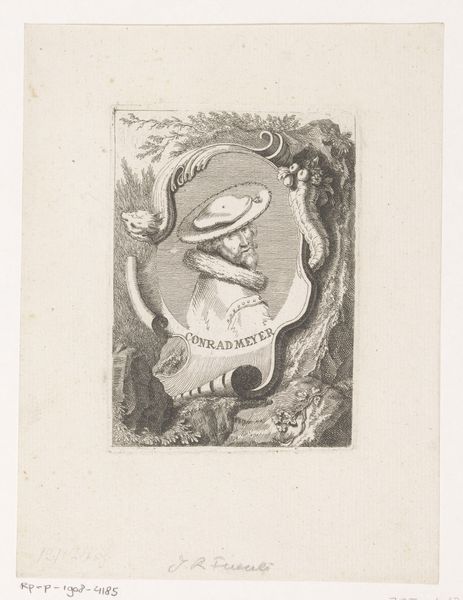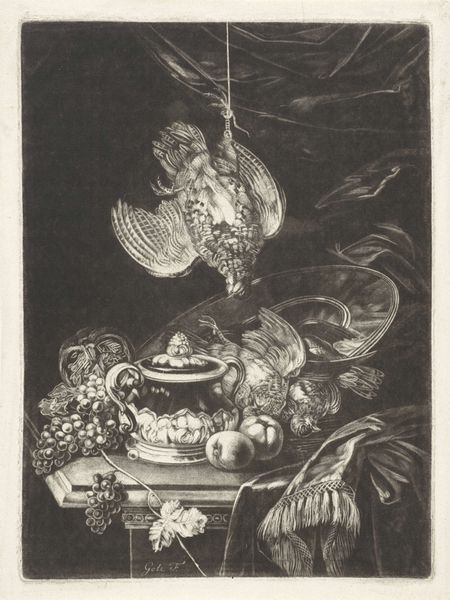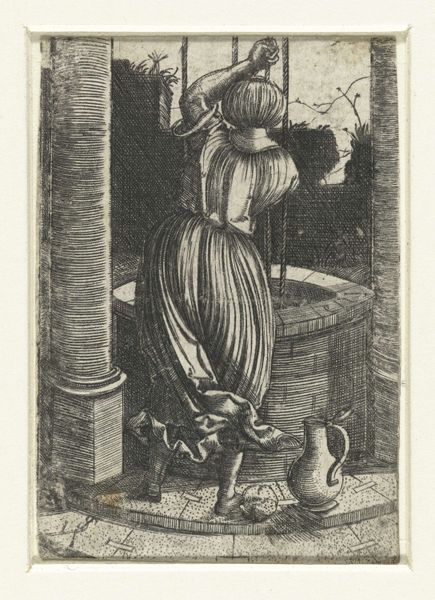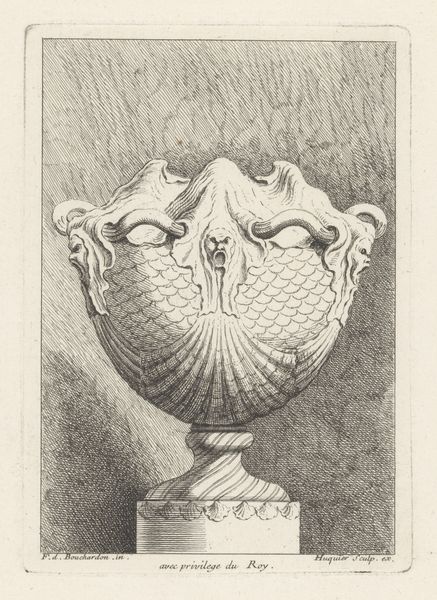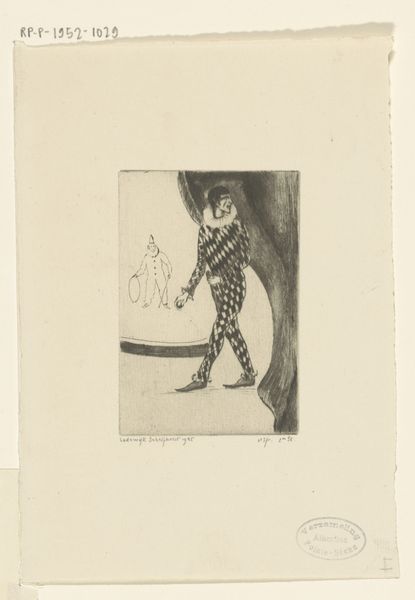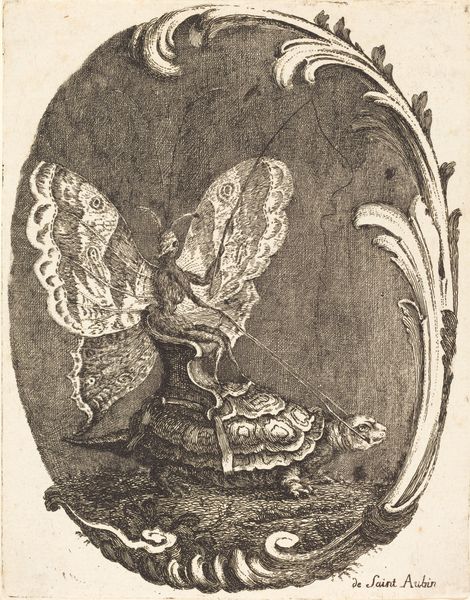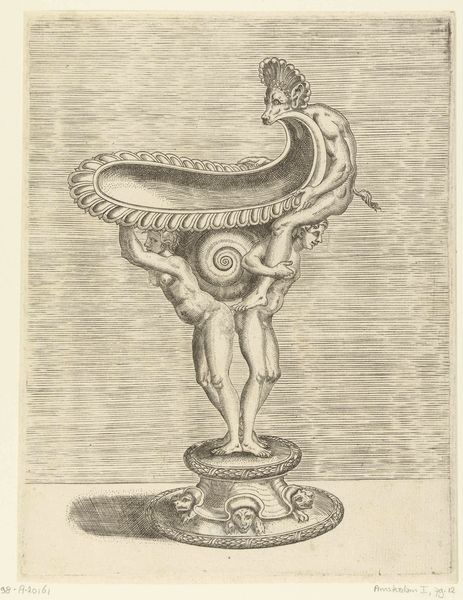
drawing, lithograph, print, paper
#
drawing
#
lithograph
# print
#
paper
#
symbolism
Dimensions: 295 × 224 mm (image/chine); 482 × 314 mm (sheet)
Copyright: Public Domain
Editor: Here we have "Untitled, plate from Je regardais et je vis..." by Jean Caldain, created in 1896. It's a lithograph, so a print on paper. This strange figure almost makes me laugh, but there is also a darker undertone I cannot place. What strikes you when you look at it? Curator: I see a compelling example of Symbolist printmaking, deeply embedded in its social context. Consider the materials. The lithographic process, with its reliance on easily reproducible images, democratized art, making it accessible beyond the elite. But what kind of commentary is made through these reproductive methods? Editor: So the choice of lithography itself says something about the intention of the artwork? Curator: Precisely. The Symbolists often critiqued the burgeoning industrialism of the late 19th century. How does this creature—seemingly a product of nightmare, manufactured through a mechanical process—comment on that tension? The dark, almost crude, application of ink. It hints at the unsettling impact of mass production on the human psyche and labor in industrial contexts. Editor: I hadn't thought about the connection to industrialism and production like that. Now, the way the creature hangs, it gives the image a kind of a nightmarish feel, contrasting the flatness given by lithography and cheap material used. Curator: Exactly. Think about who had access to these prints, consider the implications. Its dreamlike quality critiques consumerism and labor conditions through the grotesque representation of this character. It’s both repulsive and mesmerizing, achieved through industrial printing. The Symbolists like Caldain used the means of production against themselves. What can we make of that? Editor: This has given me a new framework for interpreting not only this artwork, but art more broadly. Thank you! Curator: It’s a pleasure. Analyzing through materiality and social context opens many interesting paths.
Comments
No comments
Be the first to comment and join the conversation on the ultimate creative platform.
